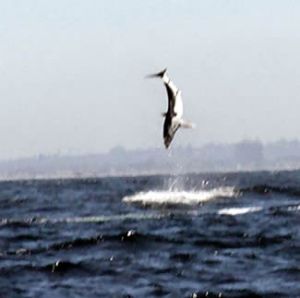Since you asked … but, I’d like to preface this list of the 5 most dangerous sharks with this
excerpt taken from an article in Time by Terry McCarthy.
“In California there is only one shark attack for every 1 million surfing days, according to the Surfrider Foundation. You are 30 times as likely to be killed by lightning. Poorly wired Christmas trees claim more victims than sharks, according to Australian researchers. And dogs — man’s best friends — bite many thousands more people than sharks do.”
Here is a list pulled from the International Shark Attack File. This file (dating from 1580 to 2008) has been compiled by the Ichthyology department of the Florida Museum of Natural History.
- White Shark (Commonly known as the “Great White Shark”, but, this is not the correct name since there is no “Lesser Great White Shark”) – 451 attacks
- Tiger Shark – 158 attacks
- Bull Shark – 179 attacks
- Sand Shark – 75 attacks
- Black tip Shark – 41 attacks
Do you have another great question? Check out www.beachchairscientist.com and enter your request or e-mail info@beachchairscientist.com.

 ripping apart prey. This may seem like it will hurt, but, a shark’s entire skeleton is made out of
ripping apart prey. This may seem like it will hurt, but, a shark’s entire skeleton is made out of  The electrosensory organ are useful for traveling far distances in the open ocean. It is like a internal GPS system. (I am not sure if it comes with a funny British accent like the one in my uncle’s car though.)
The electrosensory organ are useful for traveling far distances in the open ocean. It is like a internal GPS system. (I am not sure if it comes with a funny British accent like the one in my uncle’s car though.)







What people are saying …